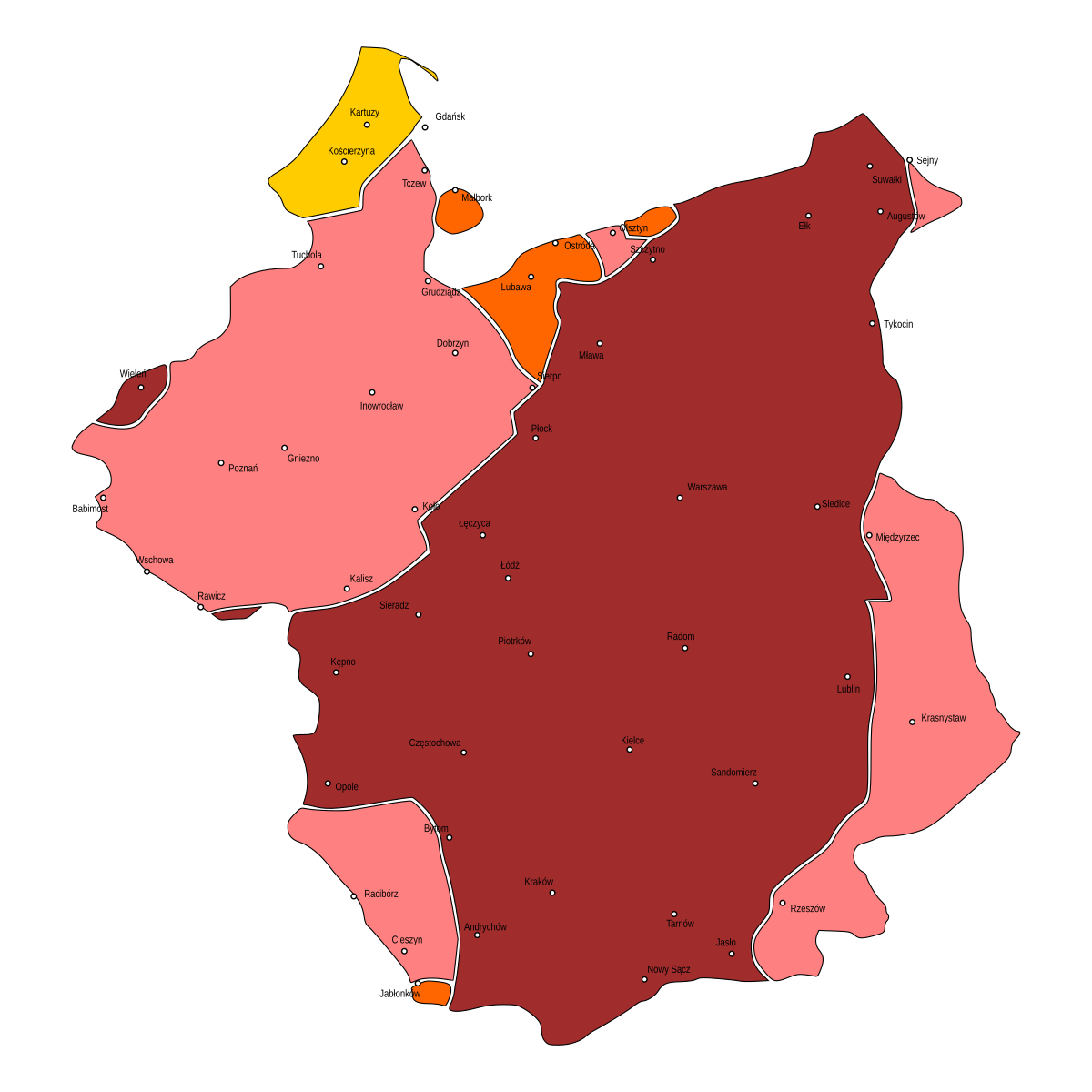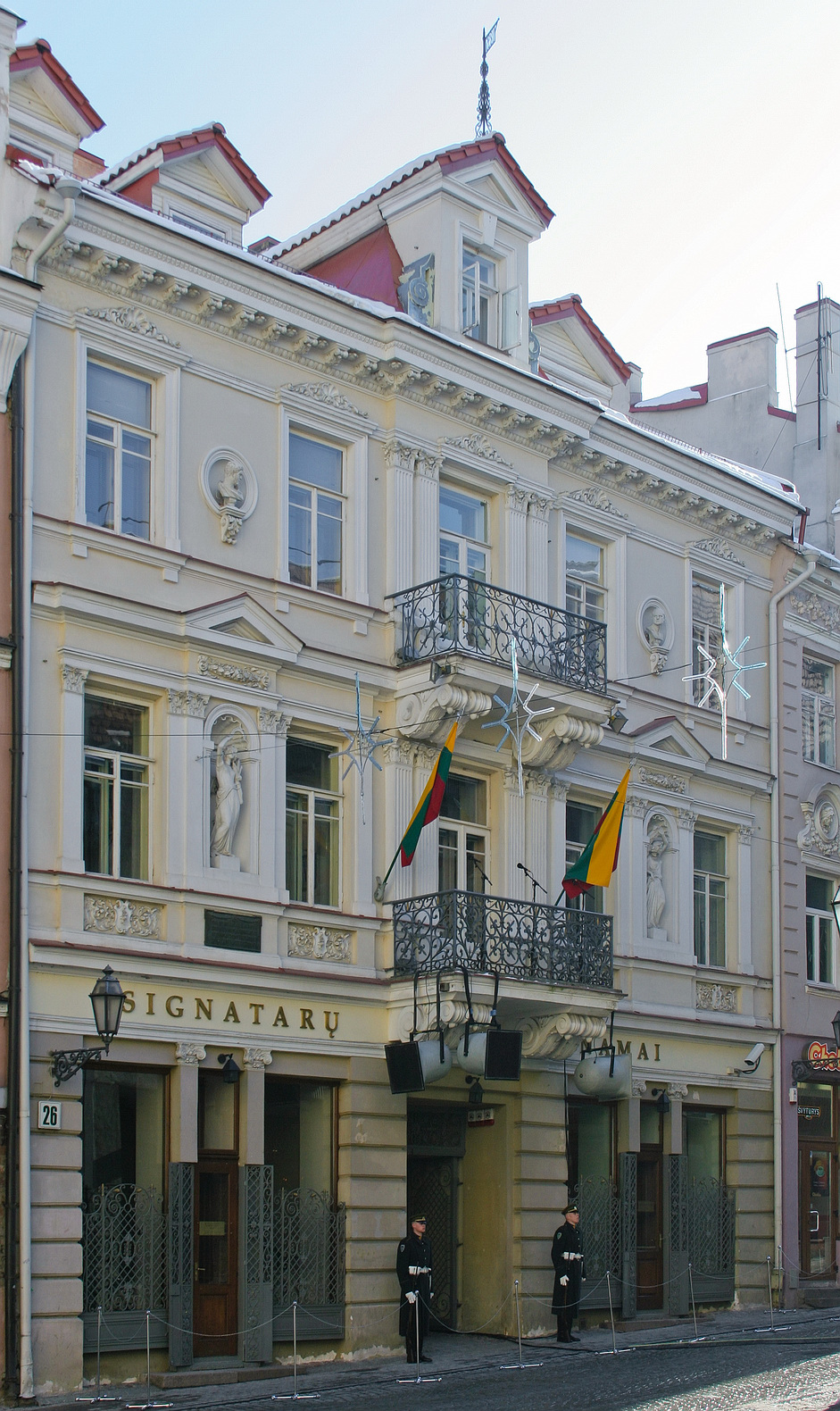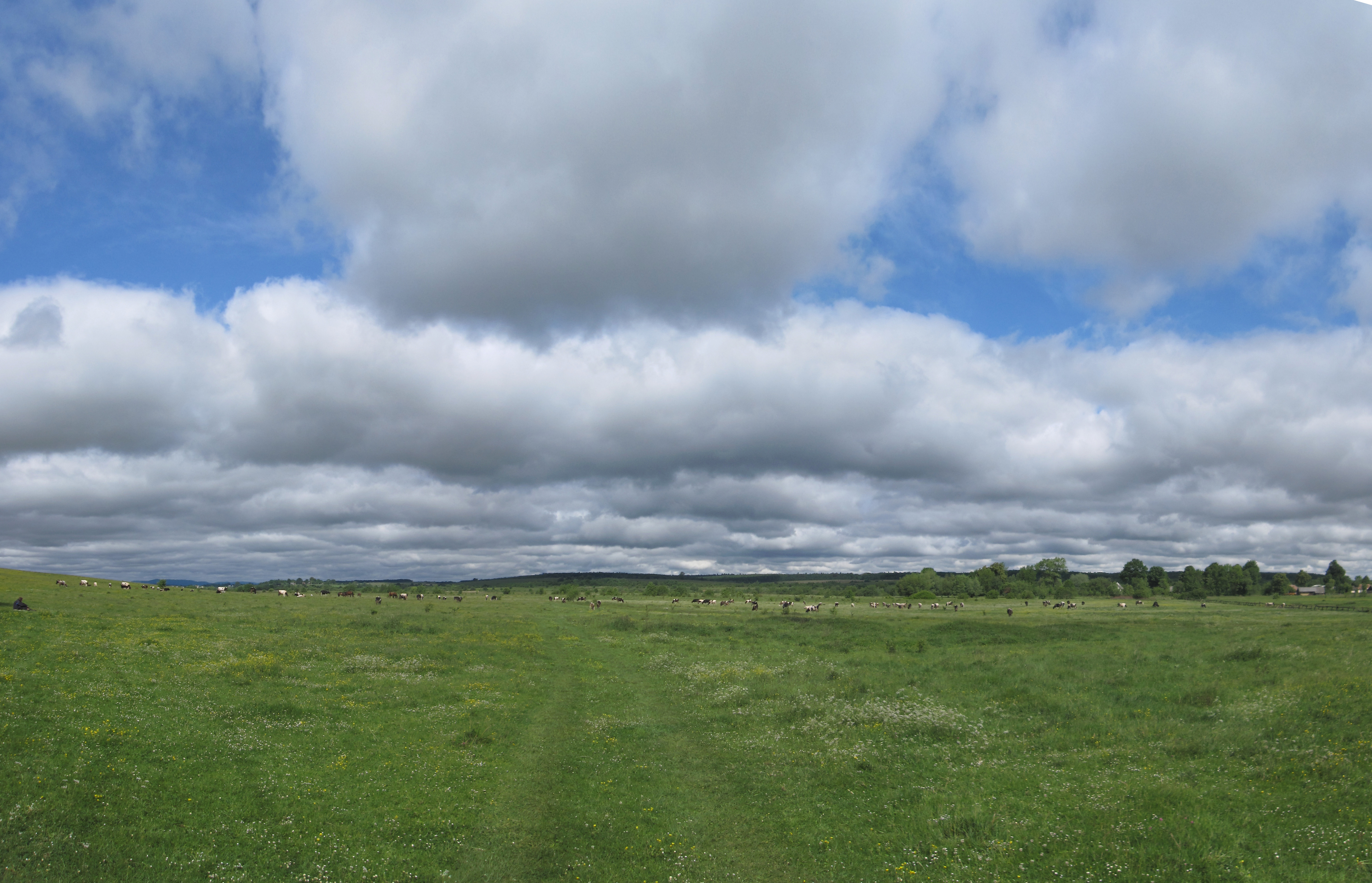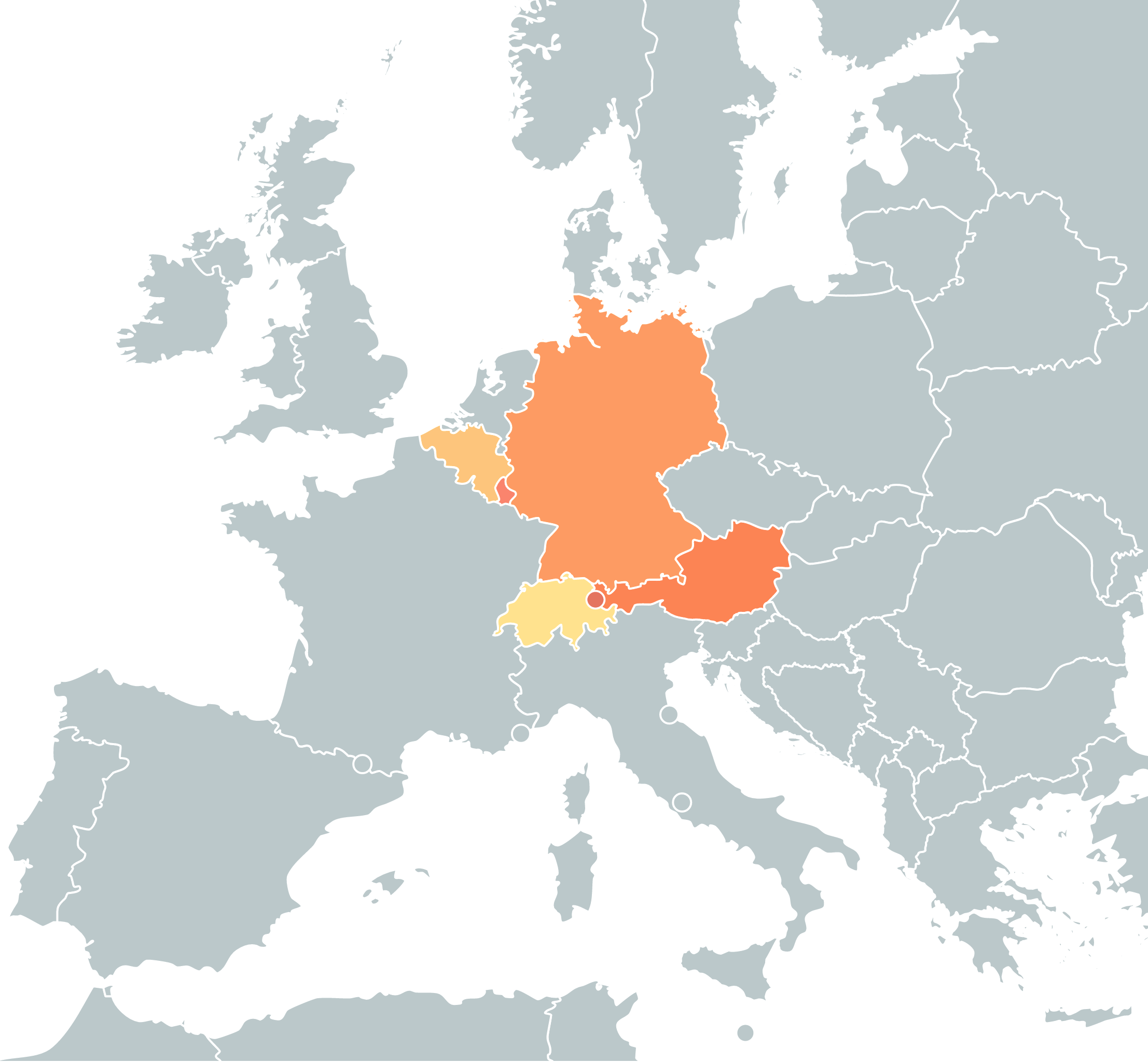|
Dialects Of Polish
Polish dialects are regional vernacular varieties of the Polish language. Four major dialect groups are typically recognized, each primarily associated with a particular geographical region, and often further subdivided into subdialectal groups (termed ''gwara'' in Polish).Roland Sussex and Paul Cubberley (2006). ''The Slavic Languages''. Cambridge University Press. P. 530.Robert A. Rothstein (1994). "Polish". ''The Slavonic Languages'', edited by Bernard Comrie and Greville G. Corbett. Routledge. Pp. 754–756. They are: * Greater Polish, spoken in the west * Lesser Polish, spoken in the south and southeast * Masovian, spoken throughout the central and eastern parts of the country * Silesian spoken in the southwest (sometimes also considered a separate language, see comment below) The regional differences correspond mainly to old ethnic or tribal divisions from around a thousand years ago. As a result of 19th century measures taken by occupying powers, of expulsions plus o ... [...More Info...] [...Related Items...] OR: [Wikipedia] [Google] [Baidu] |
Karol Dejna
Karol Dejna (10 November, 1911 – 15 April, 2004) was a Polish linguist. In 1930 he graduated from the Juliusz Słowacki State Secondary School in Tarnopol. He studied Polish philology at the Jan Kazimierz University in Lviv, from which he graduated in 1935. Until 1941 he worked as a teacher in Lviv secondary schools. From 1945 associated with the University of Łódź, initially as an assistant, then assistant professor (1947 defended his doctorate, 1952 habilitated), deputy professor (1951–1954) and professor (from 1954). From 1954 he was an associate professor, and from 1962 a full professor. In 1983 he became a correspondent member of the Polish Academy of Sciences, and in 1989 a full member of the Academy. From 1993 a correspondent member of the Polish Academy of Arts and Sciences. At the University of Łódź, he was, inter alia, the position of vice-rector (1956–1959), deputy director of the Institute of Polish Philology (1970–1979), in 1988 he was awarded the tit ... [...More Info...] [...Related Items...] OR: [Wikipedia] [Google] [Baidu] |
World War II
World War II or the Second World War, often abbreviated as WWII or WW2, was a world war that lasted from 1939 to 1945. It involved the World War II by country, vast majority of the world's countries—including all of the great powers—forming two opposing military alliances: the Allies of World War II, Allies and the Axis powers. World War II was a total war that directly involved more than 100 million Military personnel, personnel from more than 30 countries. The major participants in the war threw their entire economic, industrial, and scientific capabilities behind the war effort, blurring the distinction between civilian and military resources. Air warfare of World War II, Aircraft played a major role in the conflict, enabling the strategic bombing of population centres and deploying the Atomic bombings of Hiroshima and Nagasaki, only two nuclear weapons ever used in war. World War II was by far the List of wars by death toll, deadliest conflict in hu ... [...More Info...] [...Related Items...] OR: [Wikipedia] [Google] [Baidu] |
Vilnius
Vilnius ( , ; see also other names) is the capital and largest city of Lithuania, with a population of 592,389 (according to the state register) or 625,107 (according to the municipality of Vilnius). The population of Vilnius's functional urban area, which stretches beyond the city limits, is estimated at 718,507 (as of 2020), while according to the Vilnius territorial health insurance fund, there were 753,875 permanent inhabitants as of November 2022 in Vilnius city and Vilnius district municipalities combined. Vilnius is situated in southeastern Lithuania and is the second-largest city in the Baltic states, but according to the Bank of Latvia is expected to become the largest before 2025. It is the seat of Lithuania's national government and the Vilnius District Municipality. Vilnius is known for the architecture in its Old Town, declared a UNESCO World Heritage Site in 1994. The city was noted for its multicultural population already in the time of the Polish–Li ... [...More Info...] [...Related Items...] OR: [Wikipedia] [Google] [Baidu] |
Soviet Union
The Soviet Union,. officially the Union of Soviet Socialist Republics. (USSR),. was a List of former transcontinental countries#Since 1700, transcontinental country that spanned much of Eurasia from 1922 to 1991. A flagship communist state, it was nominally a Federation, federal union of Republics of the Soviet Union, fifteen national republics; in practice, both Government of the Soviet Union, its government and Economy of the Soviet Union, its economy were highly Soviet-type economic planning, centralized until its final years. It was a one-party state governed by the Communist Party of the Soviet Union, with the city of Moscow serving as its capital as well as that of its largest and most populous republic: the Russian Soviet Federative Socialist Republic, Russian SFSR. Other major cities included Saint Petersburg, Leningrad (Russian SFSR), Kyiv, Kiev (Ukrainian Soviet Socialist Republic, Ukrainian SSR), Minsk (Byelorussian Soviet Socialist Republic, Byelorussian SSR), Tas ... [...More Info...] [...Related Items...] OR: [Wikipedia] [Google] [Baidu] |
Kresy
Eastern Borderlands ( pl, Kresy Wschodnie) or simply Borderlands ( pl, Kresy, ) was a term coined for the eastern part of the Second Polish Republic during the History of Poland (1918–1939), interwar period (1918–1939). Largely agricultural and extensively multi-ethnic, it amounted to nearly half of the territory of Second Polish Republic, pre-war Poland. Historically situated in the eastern Polish–Lithuanian Commonwealth, following the Partitions of Poland, 18th-century foreign partitions it was annexed by Russia and partly by the Habsburg monarchy (Galicia (Eastern Europe), Galicia), and Polish–Soviet War, ceded to Poland in 1921 after the Peace of Riga. As a result of the Territorial changes of Poland immediately after World War II, post-World War II border changes, none of the lands remain in Poland today. The Polish plural term ''Kresy'' corresponds to the Russian ''okrainy'' (), meaning "the border regions". It is also largely co-terminous with the northern areas of ... [...More Info...] [...Related Items...] OR: [Wikipedia] [Google] [Baidu] |
Kresy Dialects
Eastern Borderlands ( pl, Kresy Wschodnie) or simply Borderlands ( pl, Kresy, ) was a term coined for the eastern part of the Second Polish Republic during the interwar period (1918–1939). Largely agricultural and extensively multi-ethnic, it amounted to nearly half of the territory of pre-war Poland. Historically situated in the eastern Polish–Lithuanian Commonwealth, following the 18th-century foreign partitions it was annexed by Russia and partly by the Habsburg monarchy (Galicia), and ceded to Poland in 1921 after the Peace of Riga. As a result of the post-World War II border changes, none of the lands remain in Poland today. The Polish plural term ''Kresy'' corresponds to the Russian ''okrainy'' (), meaning "the border regions". It is also largely co-terminous with the northern areas of the "Pale of Settlement", a scheme devised by Catherine the Great to limit Jews from settling in the homogenously Christian Orthodox core of the Russian Empire, such as Moscow and ... [...More Info...] [...Related Items...] OR: [Wikipedia] [Google] [Baidu] |
West Slavic Languages
The West Slavic languages are a subdivision of the Slavic language group. They include Polish, Czech, Slovak, Kashubian, Upper Sorbian and Lower Sorbian. The languages have traditionally been spoken across a mostly continuous region encompassing the Czech Republic, Slovakia, Poland, the westernmost regions of Ukraine and Belarus, and a bit of eastern Lithuania. In addition, there are several language islands such as the Sorbian areas in Lusatia in Germany, and Slovak areas in Hungary and elsewhere. Classification West Slavic is usually divided into three subgroups— Czecho-Slovak, Lechitic and Sorbian—based on similarity and degree of mutual intelligibility. The groupings are as follows: Some linguists include Upper and Lower Sorbian in the Lechitic branch, but other linguists regard it as a separate branch. The reason for this is that 'the Sorbian dialects are extremely diverse, and there are virtually no linguistic features common to all Sorbian dialects which ... [...More Info...] [...Related Items...] OR: [Wikipedia] [Google] [Baidu] |
Common Slavic
Proto-Slavic (abbreviated PSl., PS.; also called Common Slavic or Common Slavonic) is the unattested, reconstructed proto-language of all Slavic languages. It represents Slavic speech approximately from the 2nd millennium B.C. through the 6th century A.D. As with most other proto-languages, no attested writings have been found; scholars have reconstructed the language by applying the comparative method to all the attested Slavic languages and by taking into account other Indo-European languages. Rapid development of Slavic speech occurred during the Proto-Slavic period, coinciding with the massive expansion of the Slavic-speaking area. Dialectal differentiation occurred early on during this period, but overall linguistic unity and mutual intelligibility continued for several centuries, into the 10th century or later. During this period, many sound changes diffused across the entire area, often uniformly. This makes it inconvenient to maintain the traditional definition of a pr ... [...More Info...] [...Related Items...] OR: [Wikipedia] [Google] [Baidu] |
German Language
German ( ) is a West Germanic language mainly spoken in Central Europe. It is the most widely spoken and official or co-official language in Germany, Austria, Switzerland, Liechtenstein, and the Italian province of South Tyrol. It is also a co-official language of Luxembourg and Belgium, as well as a national language in Namibia. Outside Germany, it is also spoken by German communities in France ( Bas-Rhin), Czech Republic (North Bohemia), Poland ( Upper Silesia), Slovakia (Bratislava Region), and Hungary ( Sopron). German is most similar to other languages within the West Germanic language branch, including Afrikaans, Dutch, English, the Frisian languages, Low German, Luxembourgish, Scots, and Yiddish. It also contains close similarities in vocabulary to some languages in the North Germanic group, such as Danish, Norwegian, and Swedish. German is the second most widely spoken Germanic language after English, which is also a West Germanic language. German ... [...More Info...] [...Related Items...] OR: [Wikipedia] [Google] [Baidu] |
Ukraine
Ukraine ( uk, Україна, Ukraïna, ) is a country in Eastern Europe. It is the second-largest European country after Russia, which it borders to the east and northeast. Ukraine covers approximately . Prior to the ongoing Russian invasion, it was the eighth-most populous country in Europe, with a population of around 41 million people. It is also bordered by Belarus to the north; by Poland, Slovakia, and Hungary to the west; and by Romania and Moldova to the southwest; with a coastline along the Black Sea and the Sea of Azov to the south and southeast. Kyiv is the nation's capital and largest city. Ukraine's state language is Ukrainian; Russian is also widely spoken, especially in the east and south. During the Middle Ages, Ukraine was the site of early Slavic expansion and the area later became a key centre of East Slavic culture under the state of Kievan Rus', which emerged in the 9th century. The state eventually disintegrated into rival regional powers and ... [...More Info...] [...Related Items...] OR: [Wikipedia] [Google] [Baidu] |
Southern Borderlands Dialect
Southern Borderlands dialect is a dialect of Polish language, spoken by the Polish minority in Ukraine Ukraine ( uk, Україна, Ukraïna, ) is a country in Eastern Europe. It is the second-largest European country after Russia, which it borders to the east and northeast. Ukraine covers approximately . Prior to the ongoing Russian invas .... It is considered a branch of the Lesser Poland dialect by Zofia Kurzowa. Citations Notes References {{reflist Polish dialects Languages of Ukraine ... [...More Info...] [...Related Items...] OR: [Wikipedia] [Google] [Baidu] |
Belarus
Belarus,, , ; alternatively and formerly known as Byelorussia (from Russian ). officially the Republic of Belarus,; rus, Республика Беларусь, Respublika Belarus. is a landlocked country in Eastern Europe. It is bordered by Russia to the east and northeast, Ukraine to the south, Poland to the west, and Lithuania and Latvia to the northwest. Covering an area of and with a population of 9.4 million, Belarus is the 13th-largest and the 20th-most populous country in Europe. The country has a hemiboreal climate and is administratively divided into seven regions. Minsk is the capital and largest city. Until the 20th century, different states at various times controlled the lands of modern-day Belarus, including Kievan Rus', the Principality of Polotsk, the Grand Duchy of Lithuania, the Polish–Lithuanian Commonwealth, and the Russian Empire. In the aftermath of the Russian Revolution in 1917, different states arose competing for legitimacy amid the ... [...More Info...] [...Related Items...] OR: [Wikipedia] [Google] [Baidu] |





